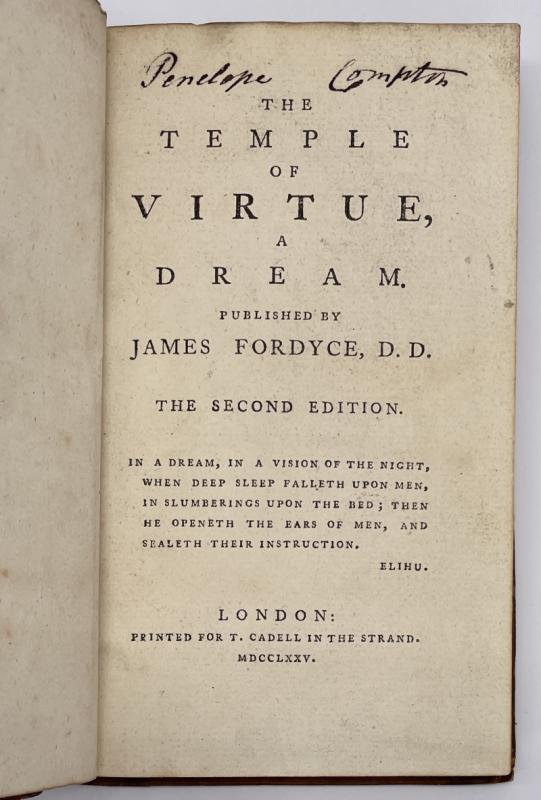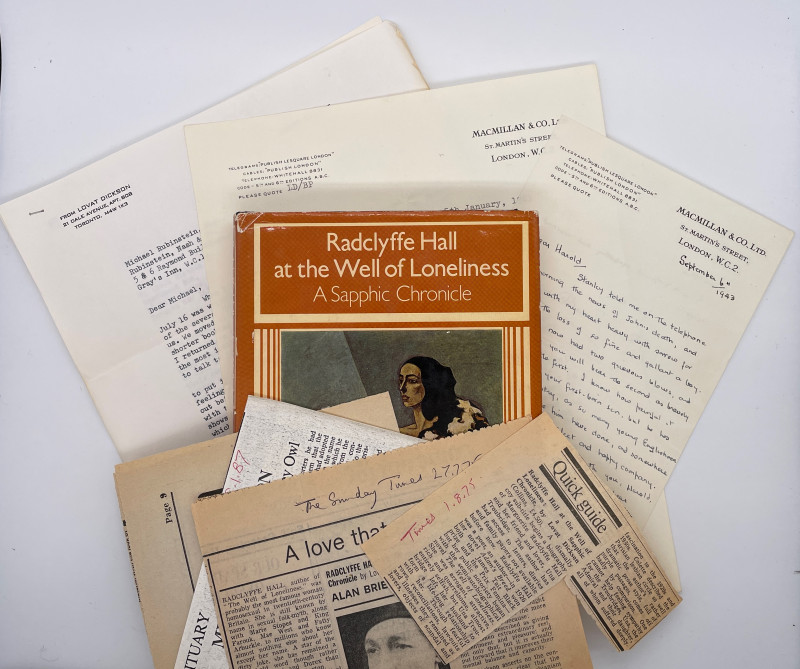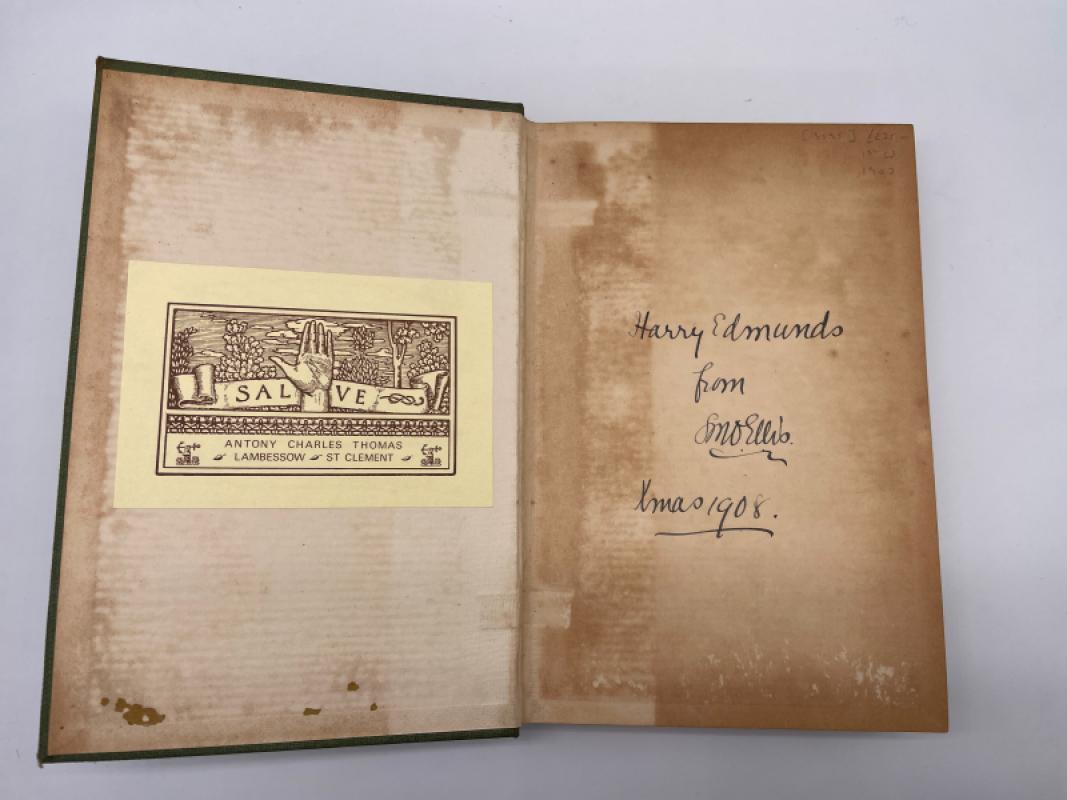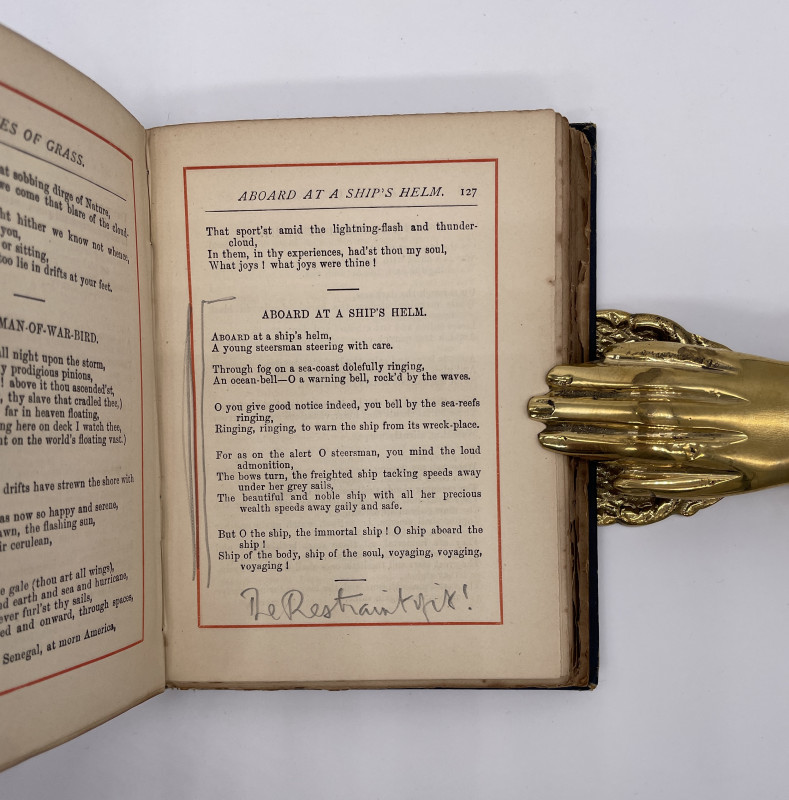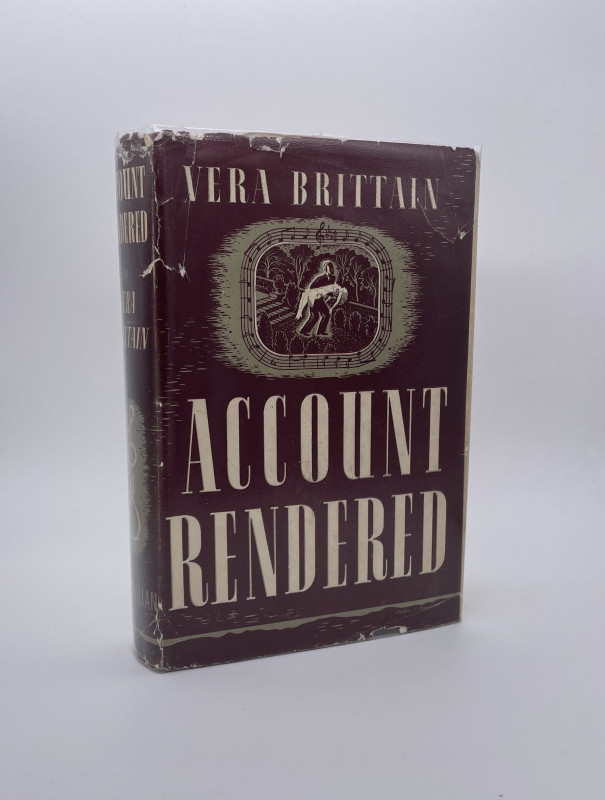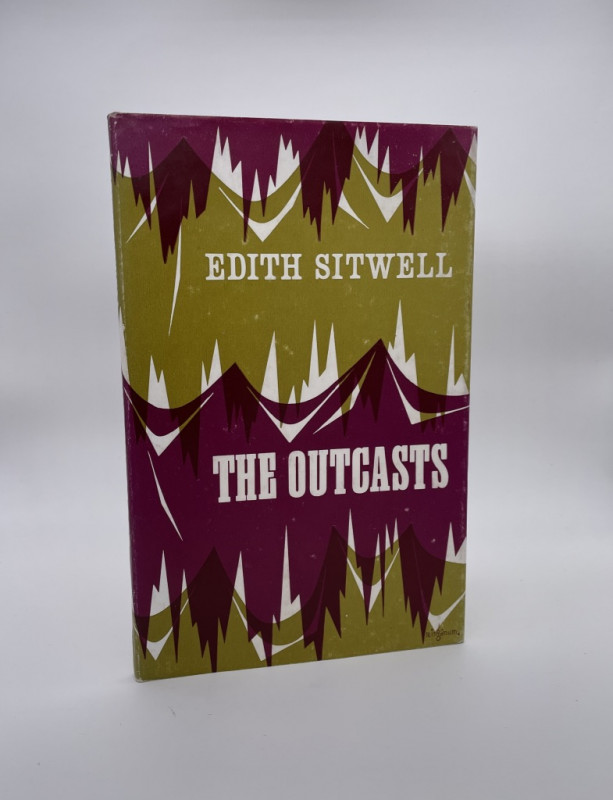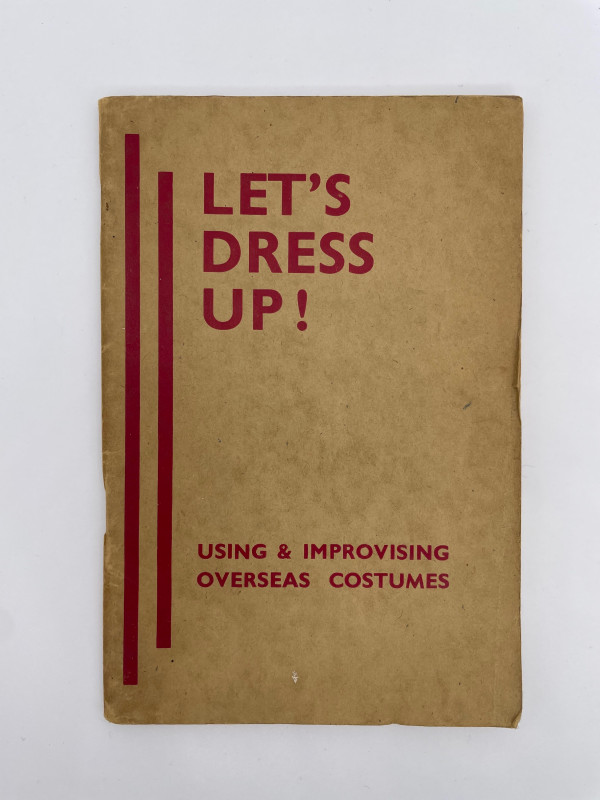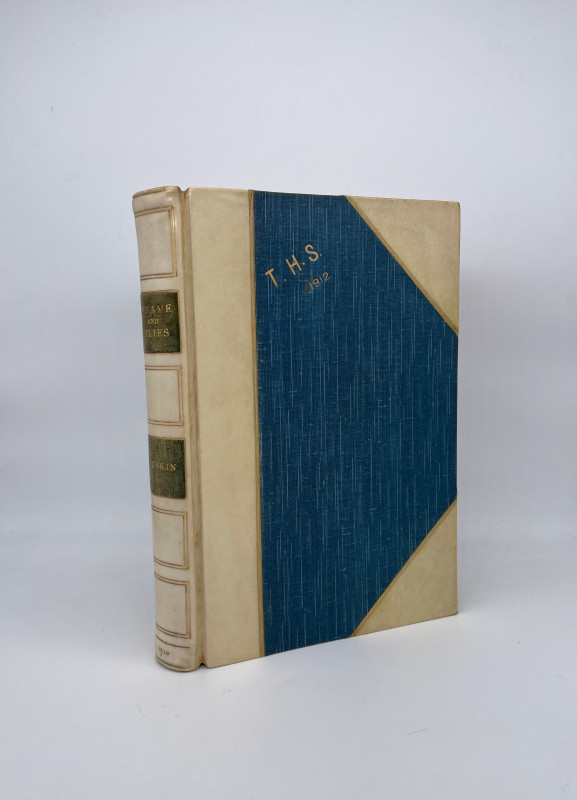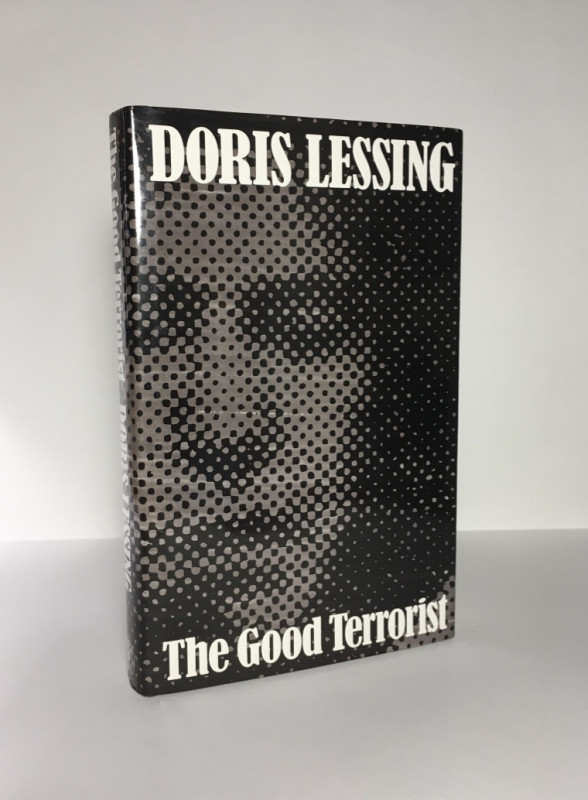[Ex Libris Bibliotheca Lindesiana] The Temple of Virtue, A dream. Published by James Fordyce, D.D.

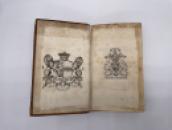

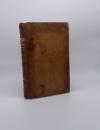
Book Description
Second (London) edition. 8vo, pp. [2 blank], viii, 110 [2 blank]. Contemporary full calf, professionally re-jointed and re-backed, original spine laid back down, five raised bands, new tan title label lettered in gilt to second spine compartment, faded gilt roll-tooling to edges, boards worn, scuffed and scored, damage to upper board, faint cup stain to bottom board. Foxing and offsetting from binders glue to pastedowns, engraved Lindsay armorial ex libris to front pastedown, smaller Bibliotheca Lindesiana library plate to ffep, ‘Penelope Compton’ boldly inscribed in brown ink to head of title page, leaf-stub after title page (pagination complete, though ESTC T62594 notes, for the non-variant edition: “With a half-title”), occasional fox spots, else, pleasingly clean, bright and tight. Good+ ESTC T62594 (with variant dedication leaf); final entry for ‘Fordyce, James’ in Bibliotheca Lindesiana. Vol. II, col. 3451.
Dealer Notes
A bright copy of the (variant) London second edition of Scottish moral philosopher David Fordyce’s popular educational allegory, with fascinating female and bibliophilic provenance: featuring the ownership inscription of Penelope Compton, later Baroness Muncaster, maternal grandmother of Alexander Lindsay, creator of the Bibliotheca Lindesiana, plus two armorial Lindsay family bookplates: a scarcer, earlier engraved ex libris, plus the Bibliotheca Lindesiana library label.
The Bibliotheca Lindesiana, arguably the greatest library formed during the nineteenth century, was created by Alexander Lindsay (1812–80), known for most of his life as Lord Lindsay, and his son (James) Ludovic Lindsay (1847‒1913), 25th and 26th Earls of Crawford and 8th and 9th Earls of Balcarres, and housed primarily at Haigh Hall, Wigan. From around 1830 Lindsay “invested huge amounts of financial capital to expand the much-depleted family library into a panoptical repository of ‘the best and most valuable books, landmarks of thought and progress, in all cultivated languages, Oriental as well as European’” (ODNB). The Bibliotheca Lindesiana was dispersed in the early twentieth century; in 1901 its manuscript collections (plus Chinese and Japanese printed books) were bought by Enriqueta Rylands, becoming the foundation, alongside the 2nd Earl of Spencer’s collection, of the John Rylands Library. The outstanding Crawford philately library was acquired by the British Library.
Penelope Pennington, Baroness Muncaster (1744-1806; formerly Compton) was descended from “distinguished ancestors,” being “the great grand-daughter of Charles, son of Spencer, 2nd Earl of Northampton [... while] Sir Edward Nicholas, Secretary of State under Charles I and Charles II, was also her great great grandfather” (Barker, 1978). When she married the soldier, Tory politician and friend of William Wilberforce, Sir John Pennington, 5th Baronet and 1st Baron Muncaster (bap. 1741-1813) in 1778 (three years after she inscribed her name in this copy of The Temple of Virtue), she “brought a large dowry and a varied inheritance,” which included a number of significant books which would eventually join the Bibliotheca Lindesiana, alongside this one. The couple had three children, with their second daughter the Hon. Maria Margaret Frances (1783-1850) the only one to survive them both; in 1811 Maria married James Lindsay, Baron of Wigan, 24th Earl of Crawford and 7th Earl of Balcarres (1783-1869), becoming Countess of Crawford. The couple made Muncaster Castle their home, rather than Haigh Hall (relations were strained between Lindsay father and heir); their first son, Alexander Lindsay, was born in 1812, six years after the death of his maternal grandmother, Baroness Muncaster, who “died accidentally [in 1806] while out canvassing for her husband,” for the seat of Westmoreland, but her books remained.
Alongside her Second Folio of Shakespeare, “bound volumes of Civil War Tracts given to [Sir Edward] Nicholas by the King, an interesting copy of the 1568 ‘Bishops’ Bible’, and – unexpectedly – the diary (1735-50) of Mrs Gunning, mother of the three famous beauties,” Penelope Compton (as was) valued this book sufficiently to take it to her new home at Muncaster Castle, where it joined the Octagonal Library, and valued it enough to pass it on to her daughter Maria. James and Maria Lindsay would have chosen to remain at Muncaster Castle indefinitely, but were forced to leave in 1820, upon the death of the 2nd Baron Muncaster, when its contents were dispersed. Despite the ongoing disagreement with his father, James Lindsay managed to persuade him to buy “altogether some 5000 volumes [of the Muncaster Castle Library]” for Haigh Hall, meaning Penelope Compton’s books joined the Lindsay family library, the foundation of the Bibliotheca Lindesiana; the family itself would not move to Haigh for another two years (Barker, 1978).
Descended from bibliophiles herself, Maria Lindsay gently directed her young son’s acquisition of books, advising him (at 8 and a half): “I have no objection to your spending your shilling in the purchase of a book, but it must not be a silly one. There are many little books which unite instruction and amusement at the same time” (cited in Barker, 1978): she surely, then, approved of Fordyce’s Temple of Virtue (an allegorical argument for twinning fiction with instruction as a pedagogic strategy); perhaps it even played a part in her own, and Alexander Lindsay’s, education?
ESTC T62594; Bibliotheca Lindesiana. Vol. II: Catalogue of the Printed Books Preserved at Haigh Hall, Wigan, Co. Pal. Lancast. ([Aberdeen]: Aberdeen University Press, 1910): the book features as the final entry under ‘Fordyce, James’ on col. 3451; Nicolas Barker (1978) Bibliotheca Lindesiana: The lives and collections of Alexander William, 25th Earl of Crawford and 8th Earl of Balcarres, and James Ludovic, 26th Earl of Crawford and 9th Earl of Balcarres (London: ‘Printed for Presentation to the Roxburghe Club, and Published by Bernard Quaritch’).
The Bibliotheca Lindesiana, arguably the greatest library formed during the nineteenth century, was created by Alexander Lindsay (1812–80), known for most of his life as Lord Lindsay, and his son (James) Ludovic Lindsay (1847‒1913), 25th and 26th Earls of Crawford and 8th and 9th Earls of Balcarres, and housed primarily at Haigh Hall, Wigan. From around 1830 Lindsay “invested huge amounts of financial capital to expand the much-depleted family library into a panoptical repository of ‘the best and most valuable books, landmarks of thought and progress, in all cultivated languages, Oriental as well as European’” (ODNB). The Bibliotheca Lindesiana was dispersed in the early twentieth century; in 1901 its manuscript collections (plus Chinese and Japanese printed books) were bought by Enriqueta Rylands, becoming the foundation, alongside the 2nd Earl of Spencer’s collection, of the John Rylands Library. The outstanding Crawford philately library was acquired by the British Library.
Penelope Pennington, Baroness Muncaster (1744-1806; formerly Compton) was descended from “distinguished ancestors,” being “the great grand-daughter of Charles, son of Spencer, 2nd Earl of Northampton [... while] Sir Edward Nicholas, Secretary of State under Charles I and Charles II, was also her great great grandfather” (Barker, 1978). When she married the soldier, Tory politician and friend of William Wilberforce, Sir John Pennington, 5th Baronet and 1st Baron Muncaster (bap. 1741-1813) in 1778 (three years after she inscribed her name in this copy of The Temple of Virtue), she “brought a large dowry and a varied inheritance,” which included a number of significant books which would eventually join the Bibliotheca Lindesiana, alongside this one. The couple had three children, with their second daughter the Hon. Maria Margaret Frances (1783-1850) the only one to survive them both; in 1811 Maria married James Lindsay, Baron of Wigan, 24th Earl of Crawford and 7th Earl of Balcarres (1783-1869), becoming Countess of Crawford. The couple made Muncaster Castle their home, rather than Haigh Hall (relations were strained between Lindsay father and heir); their first son, Alexander Lindsay, was born in 1812, six years after the death of his maternal grandmother, Baroness Muncaster, who “died accidentally [in 1806] while out canvassing for her husband,” for the seat of Westmoreland, but her books remained.
Alongside her Second Folio of Shakespeare, “bound volumes of Civil War Tracts given to [Sir Edward] Nicholas by the King, an interesting copy of the 1568 ‘Bishops’ Bible’, and – unexpectedly – the diary (1735-50) of Mrs Gunning, mother of the three famous beauties,” Penelope Compton (as was) valued this book sufficiently to take it to her new home at Muncaster Castle, where it joined the Octagonal Library, and valued it enough to pass it on to her daughter Maria. James and Maria Lindsay would have chosen to remain at Muncaster Castle indefinitely, but were forced to leave in 1820, upon the death of the 2nd Baron Muncaster, when its contents were dispersed. Despite the ongoing disagreement with his father, James Lindsay managed to persuade him to buy “altogether some 5000 volumes [of the Muncaster Castle Library]” for Haigh Hall, meaning Penelope Compton’s books joined the Lindsay family library, the foundation of the Bibliotheca Lindesiana; the family itself would not move to Haigh for another two years (Barker, 1978).
Descended from bibliophiles herself, Maria Lindsay gently directed her young son’s acquisition of books, advising him (at 8 and a half): “I have no objection to your spending your shilling in the purchase of a book, but it must not be a silly one. There are many little books which unite instruction and amusement at the same time” (cited in Barker, 1978): she surely, then, approved of Fordyce’s Temple of Virtue (an allegorical argument for twinning fiction with instruction as a pedagogic strategy); perhaps it even played a part in her own, and Alexander Lindsay’s, education?
ESTC T62594; Bibliotheca Lindesiana. Vol. II: Catalogue of the Printed Books Preserved at Haigh Hall, Wigan, Co. Pal. Lancast. ([Aberdeen]: Aberdeen University Press, 1910): the book features as the final entry under ‘Fordyce, James’ on col. 3451; Nicolas Barker (1978) Bibliotheca Lindesiana: The lives and collections of Alexander William, 25th Earl of Crawford and 8th Earl of Balcarres, and James Ludovic, 26th Earl of Crawford and 9th Earl of Balcarres (London: ‘Printed for Presentation to the Roxburghe Club, and Published by Bernard Quaritch’).
Author
[FORDYCE, David]; FORDYCE, James (additions and introduction); [(COMPTON) PENNINGTON, Penelope, LADY MUNCASTER]
Date
1775
Binding
Full calf
Publisher
London: Printed for T. Cadell in the Strand,
Condition
Good+
Friends of the PBFA
For £10 get free entry to our fairs, updates from the PBFA and more.
Please email info@pbfa.org for more information
